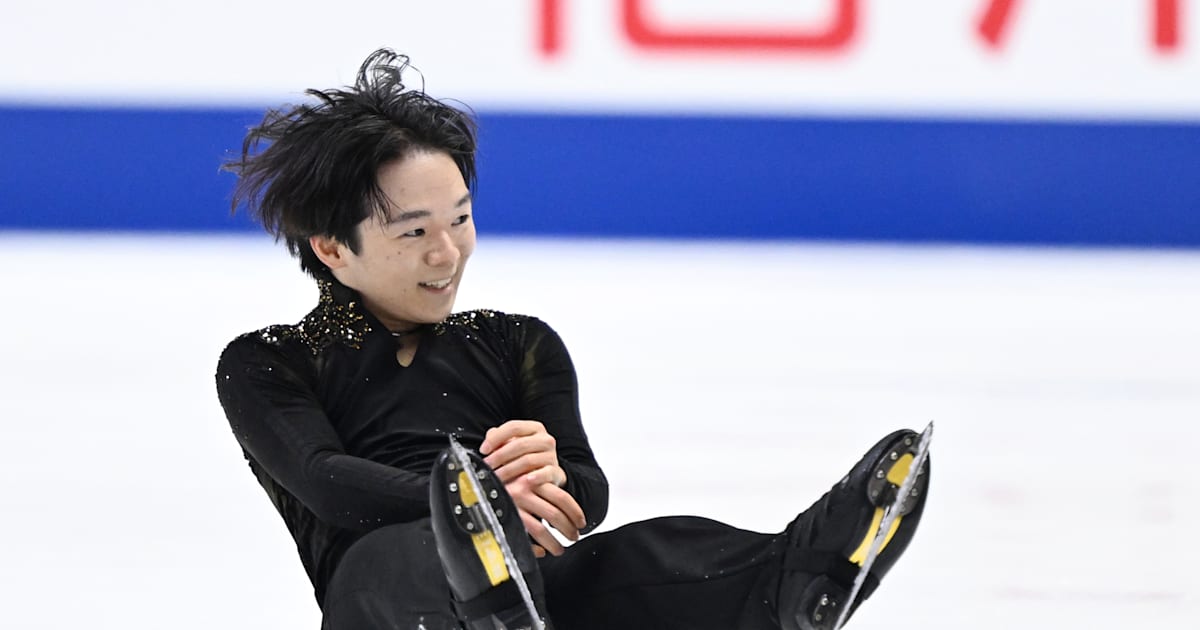I don’t quite know whether to laud Eddie Izzard’s “Hamlet” as a remarkable dramatic achievement or to lament that the renowned British comedian, actor and activist seems to have bitten off more than she can chew. Maybe both.
In either case, the solo show at Chicago Shakespeare Theater, here for a very brief time between a thrice-extended New York run and a London transfer, definitely is a theatrical event. Izzard takes on 23 roles in the two-hour-and-twenty-minute play (including intermission), adapted and trimmed from the roughly four-hour original by her brother, Mark Izzard. The memorization alone is a major feat.
Directed by Selina Cadell, and dressed in leather-like pants, a dark damask jacket and heeled boots, she plays both men and women without any costume changes and using virtually no props. Tom Piper’s scenic design basically is a rectangular box in marbled off-white with two windows and no immediately visible door, emphasizing the idea of Denmark — or the Danish court, at least — as a prison. Any color comes from Tyler Elich’s lighting, including lurid green when the ghost of Hamlet’s father appears. Eliza Thompson contributes medieval-ish music meant to conjure up royalty, though jazz plays during intermission.
Izzard switches characters mostly by swiveling from one side to the other, moving a few feet or pacing around the stage. (Movement director is Didi Hopkins.) With rare exceptions, such as the First Gravedigger, she doesn’t create very distinctive voices for the characters, and the tone is kept on a surprisingly even keel most of the time. Perhaps she’s taking Hamlet’s advice to the Players (not to over-emote, saw the air, etc.), but the result is that unless you know the play well, it can be hard to tell who she’s supposed to be at any given moment until you figure out the context.
The difficulties peak in the climactic jousting scene in Act 5, when Hamlet, Laertes, Claudius, Gertrude and Horatio are all on stage together — and all except Horatio end up dead. Without the swords in the fight, it’s impossible to see the point at which Hamlet’s and Laertes’ get exchanged, so they poison each other instead.
Other group scenes are also frustratingly confusing, among them the performance of the play-within-the-play that enrages Claudius. In general, the take on “Hamlet” is quite traditional, so I’m not sure of the point beyond Izzard’s desire to tackle this famous tragedy.
On the other hand, some parts of the performance really work, particularly those involving humor. To portray Rosencrantz and Guildenstern, Izzard uses her hands (think Shari Lewis’ Lamb Chop without the hand puppet) and has them intone “my lord” at key moments. The running gag gets a laugh every time, though more could have been done with the king and queen’s inability to tell the pair apart.
Hamlet’s exchanges with the Gravedigger also are dryly funny, though his sharp wit in dealing with Polonius is too muted. The fewer characters on stage at any given time, the more understandable the action is.
I also liked the fact that the script clearly establishes the political context of the play, drawing the parallels between Old King Hamlet and Old Fortinbras, the king of Norway defeated by him, and their sons, Prince Hamlet and Prince Fortinbras, who sweeps in and takes over at the end.
There may be no successful way to present “Hamlet” as a one-person show (though the phenomenal “An Iliad” at Court makes me wonder), but if Izzard continues performing her singular version indefinitely, as she suggested in a brief opening night address to the audience, you’ll probably be happy if you can say you saw it.











